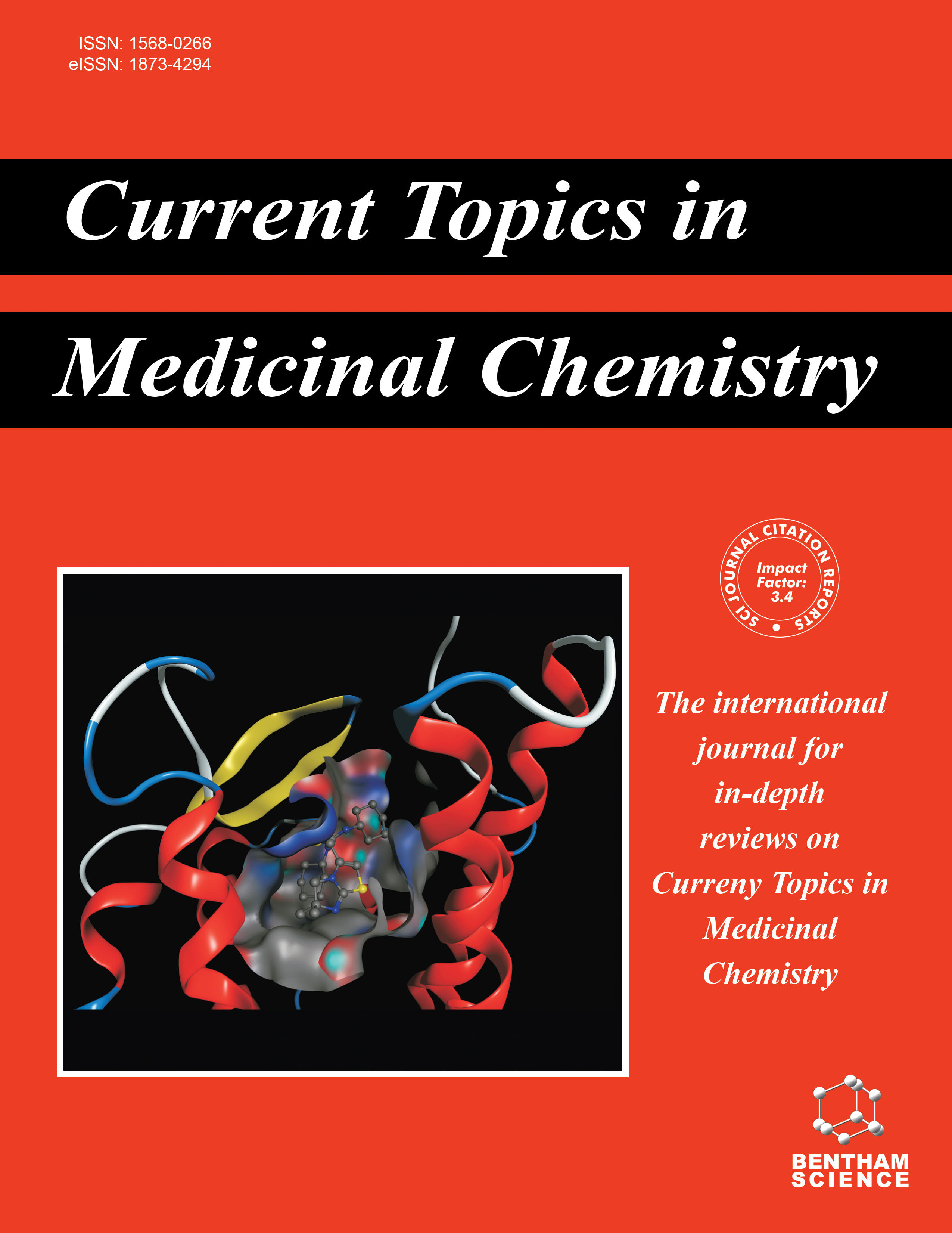- Home
- A-Z Publications
- Current Topics in Medicinal Chemistry
- Previous Issues
- Volume 8, Issue 13, 2008
Current Topics in Medicinal Chemistry - Volume 8, Issue 13, 2008
Volume 8, Issue 13, 2008
-
-
Editorial [Hot topic: Medicinal Chemistry Strategies to Minimize hERG Channel Effects 23 May (Guest Editor:Mark T. Bilodeau)]
More LessThe discovery of the association between decreased cardiac IKr current and increased risk of fatal ventricular arrhythmia has had a profound impact on the drug discovery process. It has led not only to the removal of drugs from the market but also to the addition of a significant hurdle to the development of new entities. Pharmacologic blockade of the IKr current has been shown to result from binding to the channel under Read More
-
-
-
The hERG Channel and Risk of Drug-Acquired Cardiac Arrhythmia: An Overview
More LessAuthors: Armando A. Lagrutta, Elena S. Trepakova and Joseph J. SalataThis review summarizes current knowledge of the cardiac rapidly activating delayed rectifier potassium current (IKr), and its connection to drug-acquired QT prolongation and the associated risk of ventricular arrhythmia and fibrillation. The molecular characterization of hERG as the structural correlate of IKr and the link between inherited long QT and the KCNH2 gene (hERG), have facilitated mechanistic studies of drug-acquire Read More
-
-
-
Ligand Structural Aspects of hERG Channel Blockade
More LessSudden death as a side effect of action of non-antiarrhythmic drugs is a major pharmacological safety concern facing the pharmaceutical industry and the health regulatory authorities. A number of drugs have been withdrawn from the market in recent years due to cardiovascular toxicity associated with undesirable blockade of hERG potassium channel. Pharmaceuticals of widely varying structure have been shown to inter Read More
-
-
-
The Impact of IKr Blockade on Medicinal Chemistry Programs
More LessAuthors: Ian M. Bell and Mark T. BilodeauInhibition of the cardiac IKr current leads to prolongation of the QT interval and to a risk of ventricular arrhythmia. This activity has been observed for a wide range of small molecules and results from their binding to the hERG ion channel. The off-target inhibition of IKr presents a daunting challenge for many medicinal chemistry programs. This review article presents case studies that describe a rang of findings across seve Read More
-
-
-
Overcoming hERG Affinity in the Discovery of Maraviroc; A CCR5 Antagonist for the Treatment of HIV
More LessAvoiding cardiac liability associated with blockade of hERG (human ether a go-go) is key for successful drug discovery and development. This paper describes the work undertaken in the discovery of a potent CCR5 antagonist, maraviroc 34, for the treatment of HIV. In particular the use of a pharmacophore model of the hERG channel and a high throughput binding assay for the hERG channel are described that were critical t Read More
-
-
-
Lead Optimization of Melanin Concentrating Hormone Receptor 1 Antagonists with low hERG Channel Activity
More LessAuthors: Andrew S. Judd, Andrew J. Souers and Philip R. KymThe discovery of small molecule melanin concentrating hormone receptor (MHCr1) antagonists as novel therapeutic agents has been widely pursued across the pharmaceutical industry. While multiple chemotypes of small molecule MCHr1 antagonists have been identified and shown to induce weight loss in rodent models of obesity, many of these lead compounds have been found to cross react with the hERG channel. T Read More
-
Volumes & issues
-
Volume 25 (2025)
-
Volume 24 (2024)
-
Volume 23 (2023)
-
Volume 22 (2022)
-
Volume 21 (2021)
-
Volume 20 (2020)
-
Volume 19 (2019)
-
Volume 18 (2018)
-
Volume 17 (2017)
-
Volume 16 (2016)
-
Volume 15 (2015)
-
Volume 14 (2014)
-
Volume 13 (2013)
-
Volume 12 (2012)
-
Volume 11 (2011)
-
Volume 10 (2010)
-
Volume 9 (2009)
-
Volume 8 (2008)
-
Volume 7 (2007)
-
Volume 6 (2006)
-
Volume 5 (2005)
-
Volume 4 (2004)
-
Volume 3 (2003)
-
Volume 2 (2002)
-
Volume 1 (2001)
Most Read This Month
Article
content/journals/ctmc
Journal
10
5
false
en


